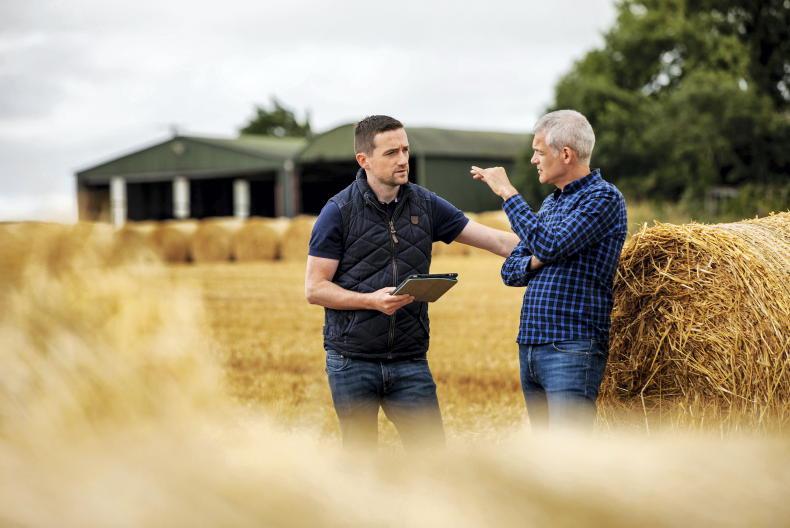There is an increasing focus among farmers to buy land driven by nitrates and dairy.
In Bank of Ireland’s analysis as part of its latest Sector Insight & Outlook H2 2024, Maher says that this perfect storm is being complicated by non-farmer investors also competing for available land.
“Over the past 12 to 18 months, we have seen a significant switch in the proportion of lending from farm development to land purchase.
“We are seeing farms with a high stocking rate or a high percentage of rented lands or farms with surplus deposits on hand having a strong appetite to buy land.
“We continue to see very strong demand for land, building on a very strong market in 2023. Average land prices have ranged from €10,000 per acre to in excess of €30,000 per acre, depending on location, land quality and local demand.
“Non-farmer investors are still competing strongly for land,” she said.
Given this increased competition to purchase available land, we are seeing an increasing number of farmers interested in leasing or renting farms.
“Given increasing concrete and building costs, we are seeing a stronger appetite from farmers to lease out established farms with substantial farm buildings.
“These opportunities are arising where existing farmers are opting to retire or exit production, particularly where there is no identified successor. A value is now being attributed to existing farm buildings driven by current building and concrete costs, which support increasing slurry storage capacity and overall housing facilities at a lower cost to new builds.”
Increase in farmers exiting dairy

While agricultural property continues to rise in value and there is competition for land, a poignant picture is also emerging in terms of succession, she warned.
“Across the country, we are beginning to see more farmers with no successors in place who are considering exiting dairying. Those that are exiting are looking to either lease the land or (depending on age) convert the farm to a calf to beef/beef cattle/contract rearing system.
“The cost of compliance with increased environmental regulations is also a consideration to exit for farmers.”
Self-sufficiency

After a challenging year weather-wise, with a resultant shortage of fodder on some farms, Maher pointed to the need for increased focus on fodder self-sufficiency and security of supply on farms
“In this region [southeast and midlands], we are seeing many livestock farmers trying to build fodder supplies by incorporating their own whole crops alongside adding back some tillage into the farm system.
“This is helping to ensure supply security for the winter and also allow more self-sufficiency in straw and fodder to reduce reliance on market dynamics.”
Maher said that farmers, like everyone else in Ireland, have experienced financial challenges as a result of inflation and the increased cost of living.
She emphasised the need for farmers and their families to focus on their own financial wellbeing and plan for the future.
“Like everyone else, we are seeing the cost of living increase for farmers. Based on 2023 accounts, we have seen drawings (living expenses) have increased across many farms (regardless of farm system) compared to 2022.
“Some of the increase may be due to higher than normal profits allowing for additional drawings. However when profitability dropped in 2023 versus 2022, drawings did not (or could not) reduce, as cost of living increases did not come back,” she warned.
She outlines how Bank of Ireland is focused on supporting farmers through their environmental transition and, despite the current challenges, said that Bank of Ireland is comfortable and confident regarding the sector’s future.
For more information, please click here.
Bank of Ireland is regulated by the Central Bank of Ireland.






 This is a subscriber-only article
This is a subscriber-only article





